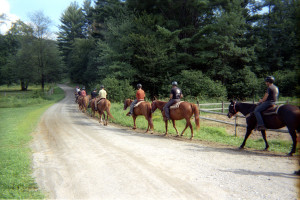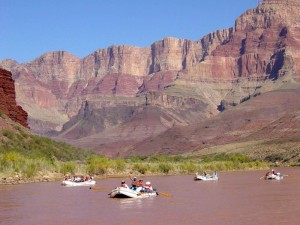Various commentators characterize mountain biking, horseback riding, climbing, white water rafting, white water kayaking, and scuba as high risk activities. Indeed, mountain biking may have been the most injury-prone activity at the last National Jamboree. And, there are a number of reported Scout youth and adult deaths due to white water rafting. Such commentators also make the point that custodial groups (such as schools, Scout units, etc.) are sometimes lured into a false sense of security by engaging in such activities based on the fact that commercial outfitters provide such services.
It should be remembered that the degree of risk which commercial outfitters ask be assumed by its usual adult-focused client base may be more appropriate for that client base (older teens and adults) than having such risk assumed by much younger youth of Scout age (who may be less physically and mentally prepared for the same activity). This goes to the heart of Scouting’s “age appropriate” guidelines, in that the appropriateness of an activity for a Scout of a particular age should be viewed through the eyes of the Scout, not through the eyes of an adult who may have an adult’s view of the magnitude of risk.
Indeed, a participant at a National Capital Area Council backcountry training course remarked that “one of the best lessons for me was the difference between risks that my hiking buddy and I might take with 25+ years of hiking experience (and only ourselves to worry about), and the proper duty of care when taking Scouts on an adventure.” A lesson for all for sure!
In other words, just because an activity is offered by a commercial outfitter for certain age groups does not necessarily mean that the activity is appropriate for Scouts, either due to the normal risk associated with the activity, increased risk due to environmental conditions, the physical or mental maturity of the Scouts, the technical ability (or lack thereof) of Scouts, etc. Indeed, the minimum age requirement set by an outfitter may be inconsistent with Scouting’s age-appropriate guidelines. In summary, while an adult may have the legal ability to acknowledge that the adult’s participation in an activity may involve the possibility of catastrophic risk, society generally does not look favorably on a supervising adult making that decision on behalf of minors (Scouts) – not to mention the Scout’s parents.
Indeed, Parks Canada prohibits participation by custodial groups in activities in winter backcountry areas where the risk is potentially catastrophic . . . this decision being made after 7 of 14 teens perished in a school-sponsored winter backcountry trip.
In his book “Do No Harm” (p. 270, 2014), British surgeon Dr. Henry Marsh discusses the potential for catastrophic risk in relation to his patients, stating that some risks of an operation are more serious than others, even if the chance of a bad outcome is only 5% or so, but that “the trouble with brain surgery is that even if little things go wrong the consequences can be catastrophic, and that if the operation goes wrong it’s a 100% disaster rate for the patient, but will still only be 5% for [the surgeon].”
The same applies to outdoor Scouting activities, where the “little things” can add up to be a catastrophic result for one or more participants, even if the overall risk of the activity was initially deemed (correctly or not) not to be high.
Choose your activities carefully, choose carefully and prepare those Scouts that participate in the activity, and be sure that the activity is properly planned, conducted, and competently supervised.


